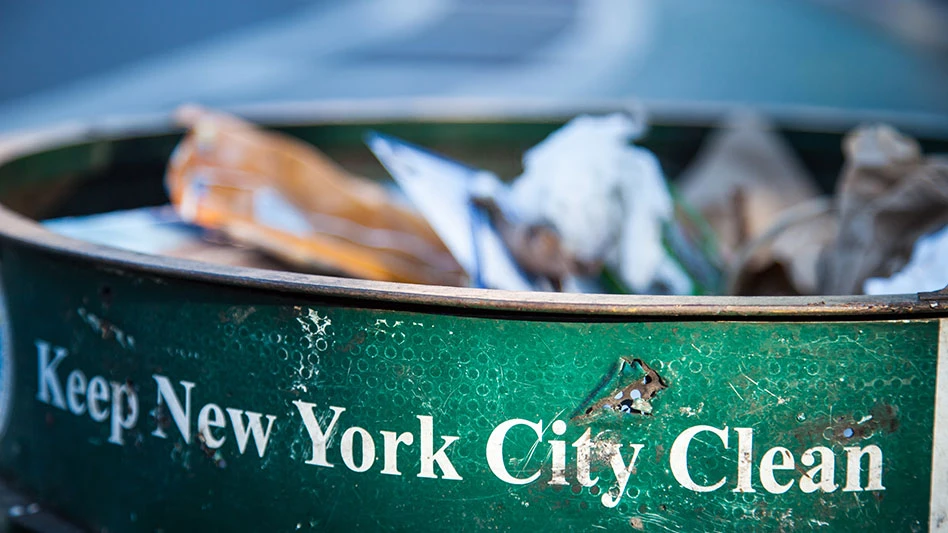
Kaesler Media | stock.adobe.com
New York City Mayor Eric Adams has announced that funding will be restored to maintain 23,000 New York City Department of Sanitation (DSNY) litter baskets and to allow DSNY to continue installing newly designed litter boxes.
DSNY had been prepared to remove more than 9,000 litter baskets—40 percent of the 23,000 DSNY litter baskets across the city, according to DSNY Commissioner Jessica Tisch. Adams says the funding was restored through fiscal responsibility in the face of a $7 billion budget gap.
The funding restoration builds on the administration’s efforts to keep city streets and public spaces clean, with efforts to containerize 100 percent of the city’s garbage, drastically reduce the time trash bags sit on streets and target hot spots for cleaning and rat mitigation within city parks during evening hours.
RELATED: New York businesses face fines with waste containerization rule
“Today’s restoration into programs at the Sanitation Department and Parks Department help us continue to make the right investments in our ‘Trash Revolution,’” Mayor Adams says in a statement. “These measured and reasonable restorations can only be made by making the right financial decisions and implementing creative policies going forward.”
Adams reports rat sighting complaints were down 20 percent in 2023 in "rat mitigation zones," where the administration has deployed targeted rat-reduction strategies.
Latest from Waste Today
- Struggling with excess wood debris?
- More of what the world needs, less of what it doesn’t
- Gaeta Recycling: Driving efficiency and sustainability with SENNEBOGEN material handlers
- Enhance mobility using Sebright Products Portable Compactor Solutions
- Drive operational efficiency with Sebright Products Oil Filter Recycler
- Keep your drivers on the road with Sebright Products Container Dogs
- Casella Waste Systems acquires William Gerber Inc.
- California wildfire debris cleanup on track to be completed by mid-summer





